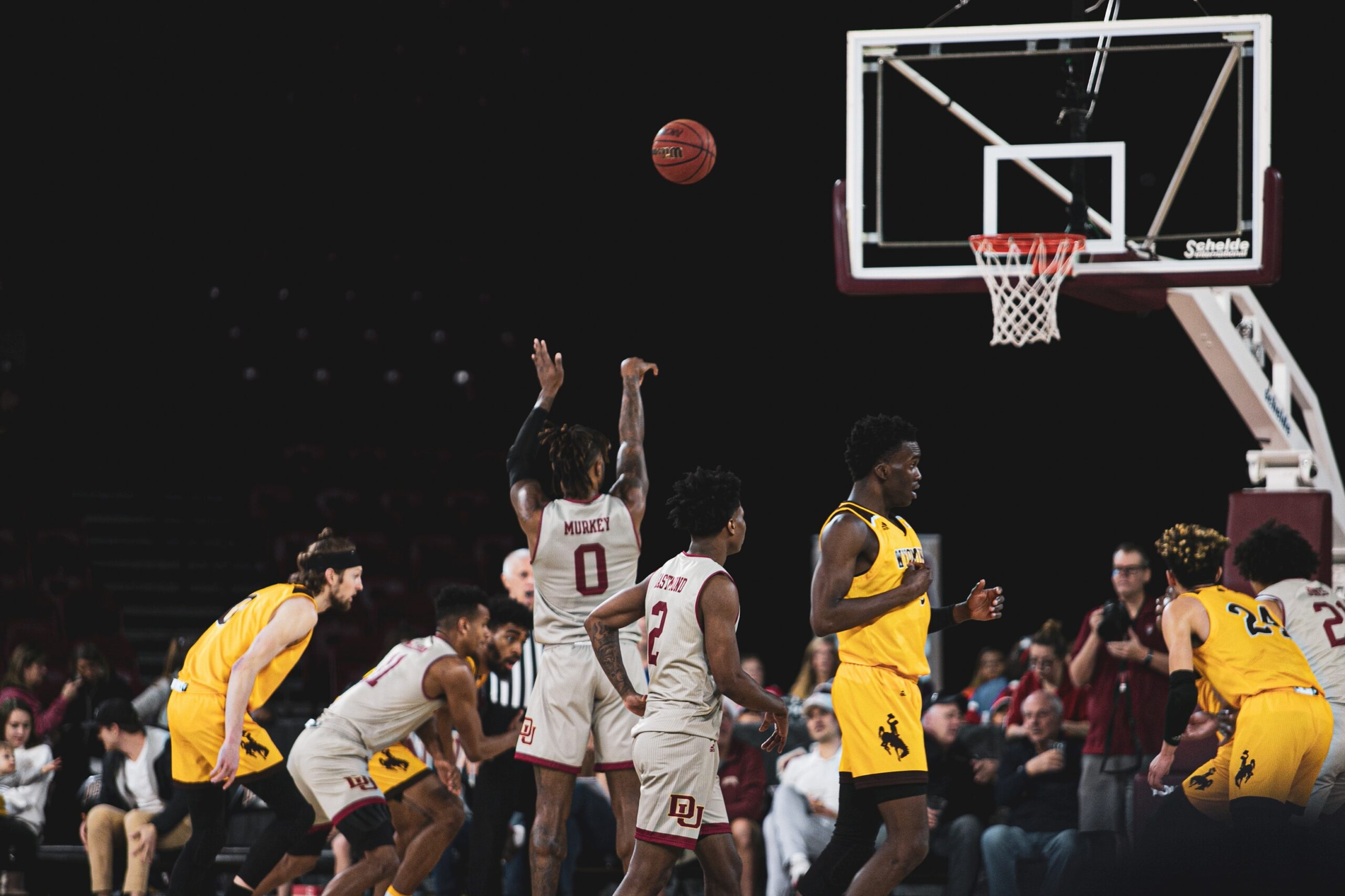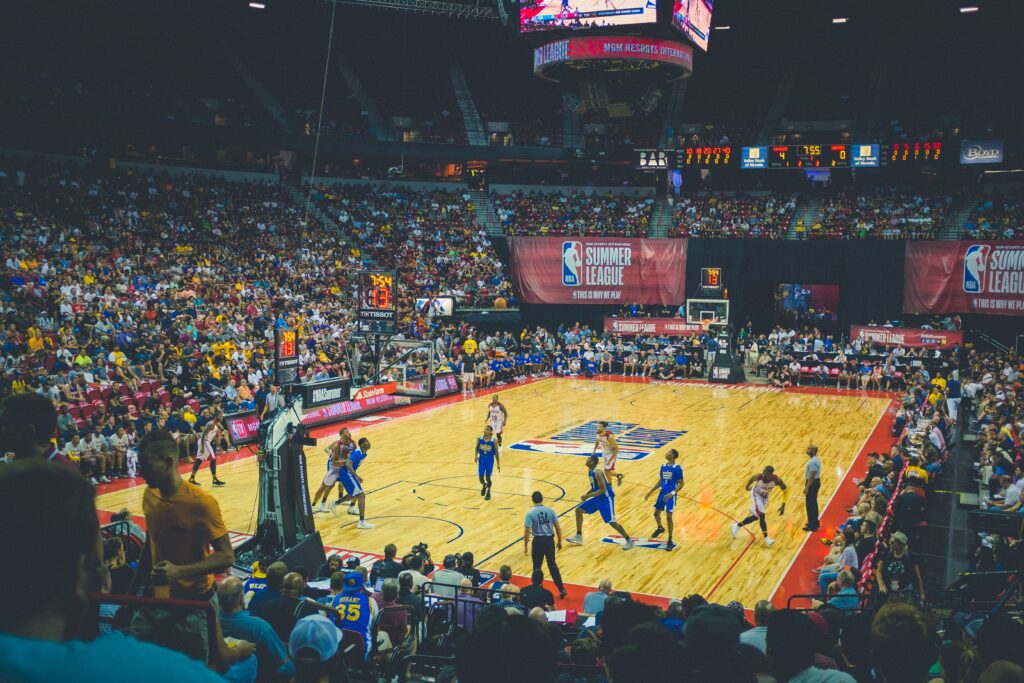The bonus rule in basketball comes into effect when a specific number of fouls is reached, and the opposing team is then awarded free throws.
This means that common off-the-ball fouls result in free throws when the offense is “in the bonus”, also referred to as the defense being “in the penalty”.
Teams under the limit are commonly referred to as having “fouls to give”, referencing how many fouls they can commit before the other team is “in the bonus”, or before they are “in the penalty”, and subsequently will shoot a free throw for any fouls committed after that. The bonus rule has changed over the years and varies at each level and league.
Contents
Types of Bonuses in Basketball
Let’s briefly go over a 1 and 1 in basketball at the free throw line. A 1 and 1 in basketball at the free throw line is where if you make the first free throw, you are awarded a second shot.
However, if you miss, you do not get a second free throw. This number resets at the quarter, or half, depending on the level or league.
Bonus
When the defense has reached the allotted number of team fouls, the offense gets a free throw for every foul thereafter from the opposing team. In College, the first bonus is a 1 and 1.
Double Bonus
When the defense has reached the allotted number of fouls, the offense is rewarded with two free throws.
No 1-and-1 situation exists in the double bonus, instead, you automatically get two free throws.
Bonus Rules by League
|
League |
Bonus Free Throws After |
Fouls Reset |
Free Throws |
|
NBA |
5th Team Foul |
Quarter |
Two |
|
NCAA |
7th Team Foul |
Half |
One |
|
FIBA |
5th Team Foul |
Game |
Two |
|
High School |
7th Team School |
Half |
One |
NBA
The bonus rule in the NBA occurs at 5 fouls each quarter, or 2 fouls in the last two minutes of the quarter, whichever comes first.
This number resets every quarter, including the 4th quarter if the game goes into overtime. The number of fouls in overtime to reach the bonus is 4, rather than 5, and 1 foul in the remaining two minutes rather than 2.
There are types of fouls that count toward a teams foul count as well. In the NBA, only defensive and loose ball fouls count toward the bonus. Offensive fouls do not count unless the team is already in the bonus, and then free throws are awarded.
FIBA
The bonus rule in FIBA-(fiba international basketball league play- almost all other leagues use these rules) is similar to the NBA where at 5 fouls the opposing team gets free throws. The difference is the fouls do not reset after the 4th quarter if the game goes into overtime.
However, they do reset at the end of each quarter like in the NBA. Another difference in FIBA play is that all fouls count toward the teams bonus count, but only defensive fouls are awarded with free throws once the bonus number is reached.
NCAA
In college play, the bonus is a little different. Fouls are counted each half, and the number of fouls is 7 for bonus free throws. Offensive fouls are never awarded free throws in NCAA, and the 1 and-1 situation is valid at the 7th foul where the player must make the first free throw to be awarded the second.
At 10 fouls per half, a team reaches the double bonus, and two free throws are automatically awarded. Like FIBA play, the fouls do not reset at the end of the 4th quarter if the game goes into overtime. In college basketball, an offensive foul is never rewarded with free throws whether the team is in the bonus or not.
High School
NFHS (National Federation of State High School Associations) follows the NCAA rules. Even though high school follows a quarter structure, fouls are still accumulated per half, and reset at halftime.
So, 7 fouls for the one-and-one, 10 fouls for an automatic two free throws, and even if you’re in the bonus an offensive foul never results in free throws.
What fouls count toward the bonus?
In NBA, NCAA and NFHS play, only defensive and loose ball fouls count toward the bonus. Offensive fouls are only awarded free throws in the NBA if a team is in the bonus. In FIBA, all fouls count toward the bonus, but only defensive or loose ball fouls are awarded free throws.
Of course, all shooting fouls across all levels of play are awarded two free throws and count toward the bonus as well. Something to note also, technical fouls do not count toward the bonus at any level of basketball.
What are intentional fouls?
Intentional fouling is a strategy at certain times in the game where the defense will foul a low-percentage free throw shooter in an effort to gain an advantage on the scoreboard. Intentional fouling has been coined the term “Hack-a-Shaq” for its use against historically poor free throw shooter, Shaquille O’neal. Legendary coach Don Nelson initially used the strategy against Dennis Rodman, and later vs Shaq, where the term was coined for its catchy rhyme.
A specific example of how this strategy is applied is as so; if you can make a 3-point field goal on one end and foul a player who shoots 50% from the free throw line, you’re essentially scoring three points to their one point, and gain a two-point advantage every possession.
Usually, this occurs at the end of a game or half, when the losing team will begin intentionally fouling to stop the clock and preserve time, in hopes to make baskets while the other team misses free throws.
Why don’t teams use this strategy throughout an entire game you may ask? The answer is simple.
Bad free-throw shooters aren’t always on the floor. If you fouled a bad free throw shooter right away, you would quickly be in the bonus.
Once this occurs every foul would merit free throws for the other team, which gives the other team a distinct advantage as the free throw is one of the easiest and most efficiently made baskets in the game of basketball.
Summary
Having a bonus in basketball helps prevent teams from nonstop fouling throughout the game and results in rewarding the other team with free throws as a penalty.. The bonus rules in basketball can be confusing to follow across all the different levels in basketball and all of the different rule changes throughout the years.



